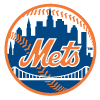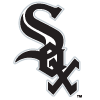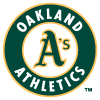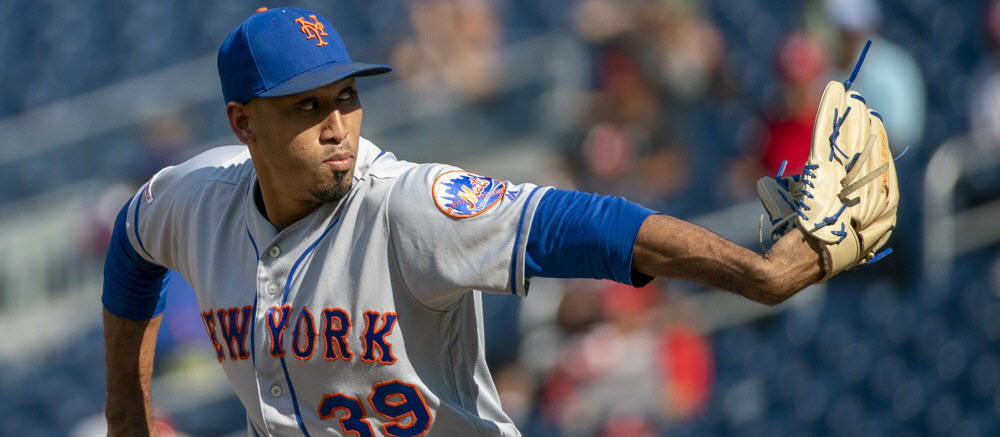This article is part of our MLB Barometer series.
There haven't been any new and exciting proposals to reopen the league in the past week, so we're back to our series of brief research pieces to kick off this week's Barometer. On the menu this week: are fantasy owners correctly valuing saves?
It's inarguable that the landscape of the save market is changing. With the era of analytics in full force, an increasing number of teams have begun to realize (to the detriment of fantasy owners) that the ninth inning isn't always the most important one. From an analytical perspective, it's correct to use your best reliever in the highest-leverage situation, a time that might come with the heart of the order up with men on second and third and none out in the seventh inning. While plenty of teams do still employ a more traditional closer, either due to being old-school or because they've decided that the psychological impact of having a defined role actually outweighs the effect of optimizing leverage, it's clear that the position is in a much different state than it was in the not so distant past.
For a quick overview of how the save category is changing, take a look at this chart, which traces the number of saves recorded by the 15th-place and 30th-place finishers in that category (corresponding to a replacement-level first and second closer in a 15-team fantasy league) over the last decade:
| Year | Saves by 15th Place | Saves by 30th Place |
|---|---|---|
| 2019 |
There haven't been any new and exciting proposals to reopen the league in the past week, so we're back to our series of brief research pieces to kick off this week's Barometer. On the menu this week: are fantasy owners correctly valuing saves?
It's inarguable that the landscape of the save market is changing. With the era of analytics in full force, an increasing number of teams have begun to realize (to the detriment of fantasy owners) that the ninth inning isn't always the most important one. From an analytical perspective, it's correct to use your best reliever in the highest-leverage situation, a time that might come with the heart of the order up with men on second and third and none out in the seventh inning. While plenty of teams do still employ a more traditional closer, either due to being old-school or because they've decided that the psychological impact of having a defined role actually outweighs the effect of optimizing leverage, it's clear that the position is in a much different state than it was in the not so distant past.
For a quick overview of how the save category is changing, take a look at this chart, which traces the number of saves recorded by the 15th-place and 30th-place finishers in that category (corresponding to a replacement-level first and second closer in a 15-team fantasy league) over the last decade:
| Year | Saves by 15th Place | Saves by 30th Place |
|---|---|---|
| 2019 | 26 | 14 |
| 2018 | 25 | 14 |
| 2017 | 26 | 14 |
| 2016 | 31 | 15 |
| 2015 | 33 | 17 |
| 2014 | 33 | 15 |
| 2013 | 34 | 16 |
| 2012 | 31 | 16 |
| 2011 | 32 | 15 |
| 2010 | 27 | 17 |
There seems to be a slight reduction in saves going to second-tier closers, but the loss of saves from the top tier is far more dramatic. For the bulk of the last decade, every drafter in a 15-team league had a good chance to get at least one 30-save closer, but there was a big drop between the 2016 and 2017 seasons. Thirty-four saves was good for just 15th in 2013, but it would have tied you for fifth last season.
There are two possible reactions to this as a drafter: consider saves a lost cause and devalue them, either punting them entirely or picking up some late lottery tickets and hoping to win the waiver-wire scramble, or push the few seemingly reliable closers up the board, knowing that the supply of closers who fit that bill is becoming increasingly thin. A group of presumably smart drafters, those who compete in The Great Fantasy Baseball Invitational, have leaned toward the devaluing route. The top five closers in 2018 were taken at ADPs of 58.2, 68.8, 78.5, 85.3 and 88.3. In 2019, the top five closers went at picks 68.0, 84.3, 89.6, 95.8 and 107.4. That's quite the drop. Is it an overreaction to owners getting burned by Edwin Diaz and Blake Treinen last year, or is it a sign of the market starting to accurately value closers?
To help answer that question, I looked at the broader behavior of saves last season, investigating how many saves each team's leader in that category had, whether that player was seen as the closer on Opening Day and, if not, how many saves the projected closer wound up with. My full spreadsheet can be found here, but these are the facts that stood out most to me:
• On average, a team's save leader finished with 25.4 saves, or 64.6 percent of his team's total.
• Just 17 of last year's team saves leaders opened the season as their team's closer. A further four were part of a committee to open the season, but a full nine didn't seem to be serious candidates at the start of the year.
• For teams that entered the season with a dedicated closer, those pitchers finished with an average of 22.5 saves, or 57.3 percent of their team's total.
• When teams opened the season with a dedicated closer but finished with another player leading in saves, rarely was the usurper the obvious next man up. Archie Bradley fits that bill, for example, but Hansel Robles, Liam Hendriks and Brandon Workman, to name a few, don't.
So what are the main takeaways? If you pick a team's clear and obvious Opening Day closer, the knowledge that you should only expect 22.5 saves on average is rather sobering. The risk is higher for the lower-tier closers, but it exists at all levels, as the example of Treinen in particular shows. Waiting to grab the next man up in the reserve rounds doesn't seem all that profitable either, however, as that wasn't likely to lead you to the likes of Robles, Hendriks or Workman last season.
That seems to suggest that playing the FAAB game might be the best way to go, but the viability of that strategy varies with the skill of your fellow managers. If you have no reason to believe you're above average in that regard, there's no guarantee you'll have much success there either, as the increasing volatility of saves means that more and more of your competitors will be trying the same tactics.
It's not clear to me that there's an obvious way to circumvent the volatility inherent in the modern closer position. Perhaps the solution is to take one more dart throw than you otherwise would have, sacrificing a bench spot you'd normally use one one more bat or starting pitcher. You're still quite likely to get burned, but if you're able to grab your first two closers near the back of the tier of acceptable options, you'll at least be burned less, and a surplus of potential closers to start the year could mean you avoid the FAAB scramble that's bound to happen when everyone else starts to wait on the position. Or, of course, you could wind up with Jose Leclerc, Arodys Vizcaino and Ryan Brasier. It's a tough world out there.
Let me know in the comments if you've managed to crack the puzzle of saves in the analytic era. For now, let's check in on a handful of players whose stocks are trending up or down based on the snippets of news that have slipped through the last few weeks.
RISERS
 Yoenis Cespedes, OF, Mets: Just when exactly Cespedes will be ready to play as he works his way back from a wild-boar-related ankle fracture isn't entirely clear, but the delayed start to the season certainly doesn't hurt him. If the rumored plan involving playing the season at spring training parks comes to pass, Cespedes would be further aided by the universal designated hitter that appears to be part of the plan, as he'd presumably be ready to hit before he's ready to take the field on an everyday basis. We haven't seen the veteran outfielder play since the middle of the 2018 campaign, and he's now 34, so there's no guarantee he claims the spot ahead of Dominic Smith or potentially Matt Adams, but we shouldn't forget how good Cespedes was when healthy. His last two seasons (a span that included only 478 plate appearances due to persistent injury issues) he hit .282/.343/.525 with 26 homers. Who knows what's left in his legs at this stage, but a universal designated hitter would make him an interesting lottery ticket.
Yoenis Cespedes, OF, Mets: Just when exactly Cespedes will be ready to play as he works his way back from a wild-boar-related ankle fracture isn't entirely clear, but the delayed start to the season certainly doesn't hurt him. If the rumored plan involving playing the season at spring training parks comes to pass, Cespedes would be further aided by the universal designated hitter that appears to be part of the plan, as he'd presumably be ready to hit before he's ready to take the field on an everyday basis. We haven't seen the veteran outfielder play since the middle of the 2018 campaign, and he's now 34, so there's no guarantee he claims the spot ahead of Dominic Smith or potentially Matt Adams, but we shouldn't forget how good Cespedes was when healthy. His last two seasons (a span that included only 478 plate appearances due to persistent injury issues) he hit .282/.343/.525 with 26 homers. Who knows what's left in his legs at this stage, but a universal designated hitter would make him an interesting lottery ticket.
 Cole Hamels, SP, Braves: Exactly how much Hamels would benefit from the delayed season wasn't initially clear, as his timeline for recovering from a shoulder injury he suffered in January has been relatively uncertain. It's still not entirely clear when Atlanta expects him to pitch, but the news from general manager Alex Anthopoulos that the veteran lefty was pain free and would be ramping up by now under normal circumstances was certainly positive. Just how much value there is in a 36-year-old who's already been injured once this season remains to be seen, but it's worth noting that Hamels' numbers haven't tailed off too dramatically in the latter stages of his career. After his ERA jumped to 4.20 in 2017, his first time with an ERA north of 4.00 since 2009, he's posted ERAs of 3.78 and 3.81 the last two seasons, with his 23.2 percent strikeout rate and 47.3 percent groundball rate last season indicating he's still a respectable option. If his health reports continue to be positive as the season approaches, Hamels will make for a perfectly acceptable late-round starter.
Cole Hamels, SP, Braves: Exactly how much Hamels would benefit from the delayed season wasn't initially clear, as his timeline for recovering from a shoulder injury he suffered in January has been relatively uncertain. It's still not entirely clear when Atlanta expects him to pitch, but the news from general manager Alex Anthopoulos that the veteran lefty was pain free and would be ramping up by now under normal circumstances was certainly positive. Just how much value there is in a 36-year-old who's already been injured once this season remains to be seen, but it's worth noting that Hamels' numbers haven't tailed off too dramatically in the latter stages of his career. After his ERA jumped to 4.20 in 2017, his first time with an ERA north of 4.00 since 2009, he's posted ERAs of 3.78 and 3.81 the last two seasons, with his 23.2 percent strikeout rate and 47.3 percent groundball rate last season indicating he's still a respectable option. If his health reports continue to be positive as the season approaches, Hamels will make for a perfectly acceptable late-round starter.
 Carlos Rodon, SP, White Sox: The delayed season has bought additional time for Rodon to recover from Tommy John surgery, a procedure he underwent in mid-May. Previous estimates held that he'd return sometime in July, though he stated recently that he believes he could be back in June. Exactly how that lines up with the start of the regular season remains to be seen, but he certainly won't have to miss nearly as much time as previously expected, if he misses any at all.The lefty had received some sleeper buzz last offseason, and while his 5.19 ERA in seven starts prior to his injury doesn't seem to justify the hype, his 3.62 FIP paints a different picture, as does his strikeout rate, which jumped from 17.6 percent in 2018 to 29.1 percent last season. Durability questions remain, but he won't be required to be particularly durable during a shortened season, making him a worthwhile sleeper target again.
Carlos Rodon, SP, White Sox: The delayed season has bought additional time for Rodon to recover from Tommy John surgery, a procedure he underwent in mid-May. Previous estimates held that he'd return sometime in July, though he stated recently that he believes he could be back in June. Exactly how that lines up with the start of the regular season remains to be seen, but he certainly won't have to miss nearly as much time as previously expected, if he misses any at all.The lefty had received some sleeper buzz last offseason, and while his 5.19 ERA in seven starts prior to his injury doesn't seem to justify the hype, his 3.62 FIP paints a different picture, as does his strikeout rate, which jumped from 17.6 percent in 2018 to 29.1 percent last season. Durability questions remain, but he won't be required to be particularly durable during a shortened season, making him a worthwhile sleeper target again.
 Jordan Hicks, RP, Cardinals: Continuing the Tommy John recovery train, Hicks has been throwing as he works his way back from the procedure he underwent last June. It would be a surprise to see him back before July, but that could still mean he misses very little (if any) time. There's no guarantee that he'll close once he returns, but he was the closer when he suffered his injury, so he should at the very least have a good shot to reclaim the role. The 23-year-old's 28.2 percent strikeout rate last season is good but not elite for a closer, and is surprisingly modest for a pitcher with triple-digit heat, but when combined with his excellent 67.2 percent groundball rate, it led to a well-supported 3.14 ERA. Whether Hicks is able to immediately wrest the ninth inning from presumptive favorite Giovanny Gallegos remains to be seen, but the delayed season at least means he's able to be drafted like a player who has a reasonable shot to close for most of the campaign.
Jordan Hicks, RP, Cardinals: Continuing the Tommy John recovery train, Hicks has been throwing as he works his way back from the procedure he underwent last June. It would be a surprise to see him back before July, but that could still mean he misses very little (if any) time. There's no guarantee that he'll close once he returns, but he was the closer when he suffered his injury, so he should at the very least have a good shot to reclaim the role. The 23-year-old's 28.2 percent strikeout rate last season is good but not elite for a closer, and is surprisingly modest for a pitcher with triple-digit heat, but when combined with his excellent 67.2 percent groundball rate, it led to a well-supported 3.14 ERA. Whether Hicks is able to immediately wrest the ninth inning from presumptive favorite Giovanny Gallegos remains to be seen, but the delayed season at least means he's able to be drafted like a player who has a reasonable shot to close for most of the campaign.
 Michael Fulmer, SP, Tigers: The final pitcher in this week's trio of Tommy John rehabbers, Fulmer appears to have the best shot at being ready for Opening Day. He underwent his procedure in March 2019, giving him plenty of time to be ready early this summer without any rush. He seems to be making the desired progress, recently beginning to throw off a mound. The 27-year-old isn't a particularly exciting option when healthy, as his ERA rose from 3.06 as a rookie to 3.83 in 2017 and 4.69 in 2018, but he should do enough to be viable in deep leagues. His career 18.9 percent strikeout rate caps his ceiling, but he's been generally able to offset that with a 6.8 percent walk rate and 11.4 percent groundball rate.
Michael Fulmer, SP, Tigers: The final pitcher in this week's trio of Tommy John rehabbers, Fulmer appears to have the best shot at being ready for Opening Day. He underwent his procedure in March 2019, giving him plenty of time to be ready early this summer without any rush. He seems to be making the desired progress, recently beginning to throw off a mound. The 27-year-old isn't a particularly exciting option when healthy, as his ERA rose from 3.06 as a rookie to 3.83 in 2017 and 4.69 in 2018, but he should do enough to be viable in deep leagues. His career 18.9 percent strikeout rate caps his ceiling, but he's been generally able to offset that with a 6.8 percent walk rate and 11.4 percent groundball rate.
FALLERS
 Giovanny Gallegos, RP, Cardinals: Gallegos was drafted as a normal closer this spring despite the fact that he has just two career saves and wasn't named as anything other than a participant in the Cardinals' closer battle. He certainly seems like a good fit for the role, as his 2.31 ERA last season was backed up by an excellent pairing of a 33.3 percent strikeout rate and a 5.7 percent walk rate, making him clearly the best option out of the team's healthy bullpen arms (given that Carlos Martinez appears to be heading back to the rotation). Jordan Hicks' eventual return from Tommy John surgery didn't give drafters too much pause this winter, as Gallegos would presumably have the time to cement himself in the role by the time Hicks returned in the summer. Now, however, Gallegos may not hold the job for much time (if any) before Hicks is able to return. Gallegos' strikeout and walk rates are both considerably better than anything Hicks has managed so far, but Hicks had the role before he got injured, so there's a reasonable chance he's given the opportunity to win it back. Gallegos price should now include a much higher risk that he won't save more than a small handful of games.
Giovanny Gallegos, RP, Cardinals: Gallegos was drafted as a normal closer this spring despite the fact that he has just two career saves and wasn't named as anything other than a participant in the Cardinals' closer battle. He certainly seems like a good fit for the role, as his 2.31 ERA last season was backed up by an excellent pairing of a 33.3 percent strikeout rate and a 5.7 percent walk rate, making him clearly the best option out of the team's healthy bullpen arms (given that Carlos Martinez appears to be heading back to the rotation). Jordan Hicks' eventual return from Tommy John surgery didn't give drafters too much pause this winter, as Gallegos would presumably have the time to cement himself in the role by the time Hicks returned in the summer. Now, however, Gallegos may not hold the job for much time (if any) before Hicks is able to return. Gallegos' strikeout and walk rates are both considerably better than anything Hicks has managed so far, but Hicks had the role before he got injured, so there's a reasonable chance he's given the opportunity to win it back. Gallegos price should now include a much higher risk that he won't save more than a small handful of games.
 Chris Bassitt, SP, Athletics: Bassitt previously appeared to be ticketed for a rotation spot to open the season, as the shoulder strain suffered by A.J. Puk in early March knocked the young lefty out of the picture, at least temporarily. The delayed season has given Puk time to get healthy again, however, likely pushing Bassitt into the sixth starter role. A shortened schedule also means workload concerns for Puk and Jesus Luzardo may be less relevant. Bassitt should still start a fair number of games, as teams nearly always need more than five starters to get through a season, but he's just not interesting enough to be worth much of an investment if starting opportunities aren't guaranteed. His 23.0 percent strikeout rate was right at the league average last season, while his 7.7 percent walk rate was slightly better than average, but there's not a lot of upside in a 31-year-old with playable but rather modest numbers. Keep him in mind as a waiver pickup once a starting job opens up, but there's little reason to invest in him at the moment.
Chris Bassitt, SP, Athletics: Bassitt previously appeared to be ticketed for a rotation spot to open the season, as the shoulder strain suffered by A.J. Puk in early March knocked the young lefty out of the picture, at least temporarily. The delayed season has given Puk time to get healthy again, however, likely pushing Bassitt into the sixth starter role. A shortened schedule also means workload concerns for Puk and Jesus Luzardo may be less relevant. Bassitt should still start a fair number of games, as teams nearly always need more than five starters to get through a season, but he's just not interesting enough to be worth much of an investment if starting opportunities aren't guaranteed. His 23.0 percent strikeout rate was right at the league average last season, while his 7.7 percent walk rate was slightly better than average, but there's not a lot of upside in a 31-year-old with playable but rather modest numbers. Keep him in mind as a waiver pickup once a starting job opens up, but there's little reason to invest in him at the moment.
 Alex Verdugo, OF, Red Sox: Verdugo featured as a riser just two weeks ago, as reports of his progress in his recovery from a stress fracture in his back seemed quite positive. More recent reports paint his recovery in a more negative light, however, with interim manager Ron Roenicke saying last week that the outfielder wasn't progressing as quickly as the team hoped. It's still possible that the delayed season means Verdugo won't wind up missing any games, but it's hard to be entirely confident in the health of a player who has been dealing with injury issues dating back to last August. The 23-year-old remains a promising young bat who could be worth a risk if you can get him at a discount, but that discount better still be there given that his injury evidently still is.
Alex Verdugo, OF, Red Sox: Verdugo featured as a riser just two weeks ago, as reports of his progress in his recovery from a stress fracture in his back seemed quite positive. More recent reports paint his recovery in a more negative light, however, with interim manager Ron Roenicke saying last week that the outfielder wasn't progressing as quickly as the team hoped. It's still possible that the delayed season means Verdugo won't wind up missing any games, but it's hard to be entirely confident in the health of a player who has been dealing with injury issues dating back to last August. The 23-year-old remains a promising young bat who could be worth a risk if you can get him at a discount, but that discount better still be there given that his injury evidently still is.










